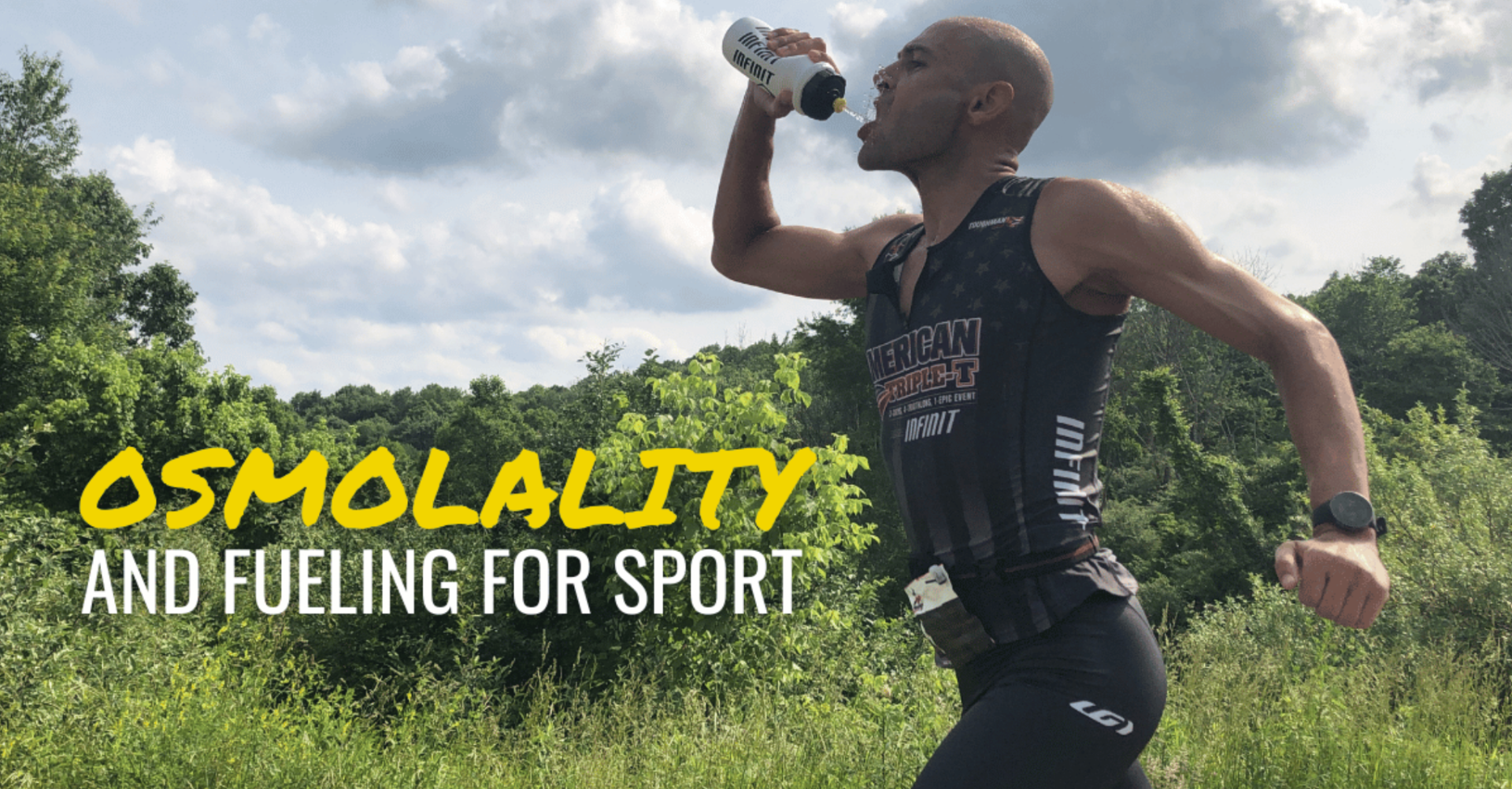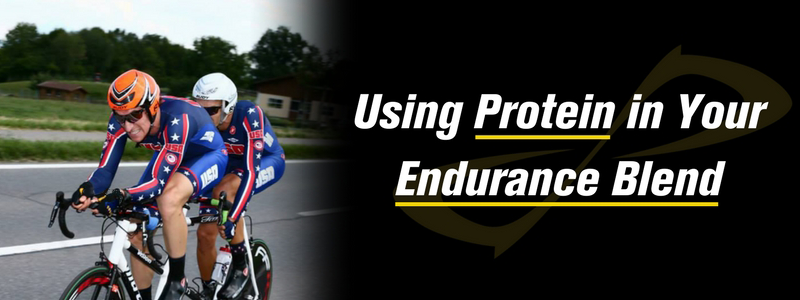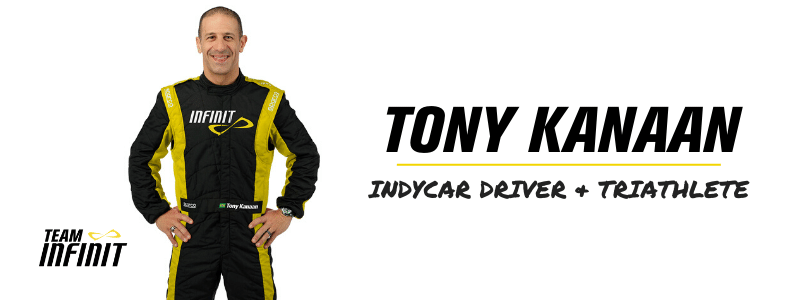Osmolality and Fueling for Sport: Why it Matters
- 15 Jan 2024

What is Osmolality?
Osmolality is a measure of the number of dissolved particles in a solution. You can think of it as a fancy word for the concentration, or density, of a fluid.
Scientifically speaking, the osmolality of a solution refers to the concentration of osmotically active particles in that solution. Osmolality is a function of the number of particles and is not related to particle weight, size, shape, or charge.
Almost every fluid has an osmolality above zero — Except for distilled water, which has been processed to remove all other substances or “solutes” from the water molecules.
You might also hear the term “osmolarity” used interchangeably with “osmolality”. The term osmolarity refers to the number of particles of solute per liter of solution, whereas the term osmolality refers to the number of particles of solute per kilogram of solvent. But when talking about physiology of body fluids, the difference between osmolality and osmolarity is negligible.
Why is Osmolality Important?
Before we answer this question, it’s important to understand homeostasis. Homeostasis is the body’s desire to maintain a stable environment. This includes maintaining a normal body temperature, a normal pH balance, normal blood glucose and electrolyte levels in the bloodstream, and more.
The osmolality of the blood is about 275-295 mOsm/kg and the body works naturally to keep it in that range. If one of the components of the bloodstream becomes off-balance, the body will work to get back to its normal ranges.
Anything that goes into your body, like food or drinks, is processed by your body in a way that ensures this balance is maintained. This is why it's best to drink plenty of fluids with meals and snacks. This combination is going to help bring the resulting stomach contents closer to that 275-295 mOsm/kg range, which helps aid in digestion.
This becomes even more important when it comes to taking in food and drink while active. While working out, the body is already in a stressed state, which can make digestion even more difficult. If you take in too much "stuff" and not enough fluid, the osmolality of the contents of your stomach is going to skyrocket, and your body is going to have to work hard to divert resources to try and digest it.
Types of Solutions
There are three main types of solutions: Hypertonic, hypotonic and isotonic.

In a hypertonic solution, there is too much “stuff” in the solution, so your body has to pull in water from your cells to help dilute the contents of your stomach. This allows your body to be able to process and absorb the nutrients more efficiently, while also pulling valuable water from the bloodstream. This is detrimental to performance. The water being pulled to help with digestion is now unable to help cool your body and provide fuel to your working muscles.
A Hypertonic Solution Can Result In: Cramping, dehydration, nausea, bloating, diarrhea, and gastric distress.
In a hypotonic solution, there’s less “stuff” in the solution than what's present in your bloodstream. In most instances, this means that you are consuming too few electrolytes with too much water. In order to absorb this watered down solution, your body pulls sodium and other substrates into the stomach from the bloodstream to help even out the density across your cell membranes.
A Hypotonic Solution Can Result In: Hyponatremia, dehydration, cramping, hypoglycemia, “bonking”.
In an isotonic solution, there is just the right amount of “stuff” and it perfectly matches the naturally occuring osmolality of your blood. Electrolytes, carbohydrates, and water are used to fuel your muscles, and nutrition in your stomach is quickly digested and efficiently used. This method adequately replaces fluids and electrolytes in your body, provides rapid hydration, and provides energy through carbohydrates without causing major fluid or electrolyte shifts.
An Isotonic Solution Can Result In: Great performance with minimal GI issues, easy digestion, efficient absorption of fluid and nutrients.

What Affects Osmolality?
There are certain molecules that can have a major impact on serum osmolality (aka blood concentration). When it comes to the osmolality of your bloodstream, things like sodium, chloride, bicarbonate, proteins, and glucose/sugar all play a role.
The fluids you consume in sports drinks are not really all that different. The three components that are needed to fuel and replenish the body, which affect the osmolality of a solution, are:
- The AMOUNT of electrolytes — Sodium, Potassium, Calcium, Magnesium, and Chloride
- The TYPE of carbohydrates
- The AMOUNT of carbohydrates
As we know, the osmolality of the blood is around 275-295 mOsm/kg. Current scientific research shows that you should target an osmolality of less than 300 mOsm/kg in your liquid nutrition to ensure the nutrients you are consuming will be easily digested and absorbed by the gastrointestinal (GI) tract. Aiming for a nutritional beverage in this optimal osmolality range does two things:
- Minimizes the risk for GI issues
- Allows the nutrition to be easily used by the body
Fluids supplied with osmolality above 300mosm/kg, (i.e. hypertonic solutions), cause not only delays in gastric emptying but also more importantly will cause fluid shifts from the body to the gut before absorption occurs. Such delays in rehydration introduce the real potential to delay and reduce performance. (Alonso, 1998, Hargreaves, 1991, Sowka et al, 2000)

A Balancing Act
When fueling your body during physical activity, you’re performing a balancing act. Your gut can only take in so much on an hourly basis before it becomes overloaded and starts to run into issues. This applies to nutrition consumption as a whole: think about your carbohydrates, your electrolytes, and total fluid needs.
Many athletes burn 400-1000+ calories per hour, but it is only feasible to take in ~250-350 calories per hour (maybe up to 400 at the very high end).
Results from sweat analysis testing show that athletes can lose over 1,000 mg of sodium per hour. And some athletes with very high sweat ratescan lose 50+ ounces (1.5+ liters) per hour during extreme conditions (i.e. excessive heat, etc.).
The key here is that a good nutrition and hydration strategy is more than just trying to do a 1:1 replacement of what you’re losing. If you start consuming too many calories and electrolytes without the proper fluid to balance it out, you will end up with a hypertonic solution and an increased risk of GI issues. This is one reason why trying to replace 100% of your caloric expenditure or sodium/electrolyte losses during activity is not a viable strategy.

The Osmo-FIT System
You may be wondering what should you be aiming for when refueling and replenishing during exercise. Cue The Osmo-FIT System — INFINIT’s patented process that automatically calculates the osmolality of your personal performance sports drink, guaranteeing that it will be isotonic, easy to digest, and will give you the results you are looking for.
The more nutrition — electrolytes, carbs, calories, and protein — that are in your drink, the higher the osmolality is going to be. These nutrients are going to add more “stuff” per serving, meaning that the osmolality of your solution will increase.
Simple sugars like dextrose and cane sugar have a greater impact on osmolality compared to more complex carbohydrates like maltodextrin. Using maltodextrin as a main carb source allows you to get more calories in your drink mix while still keeping it within the optimal osmolality range. This is why INFINIT mixes are so easy on your stomach compared to most other sports hydration drinks that only contain carbs from simple sugars (think sugary “gut bombs”).
Maltodextrin is also a weapon against “Flavor Fatigue”— A condition that occurs when your nutrition becomes unpalatable. Flavor fatigue is common in endurance athletes, and typically sets in several hours into a training session or race. This can cause athletes to forego their fueling strategy, miss feedings, and inevitably lead to low blood sugar, dehydration, and even the dreaded “bonk.”

Maltodextrin is an easily digestible complex carbohydrate, and is basically a bunch of glucose units linked together. It has a neutral flavor with naturally low sweetness, which allows you to get the carbs you need for energy without your drink becoming overly-sweet. Afterall, if a drink is so sweet that you can’t even tolerate it, what’s the point of having it in the first place?
With The Osmo-FIT System, you can customize your perfect hydration drink mix. Personalize everything down to the flavor level to be as light or strong as you like so you never succumb to flavor fatigue again. All while containing 100% of the vital nutrition your body needs to go strong and feel good all day.
For more information on the INFINIT Osmo-FIT System, our 100% satisfaction guarantee, or to have one of our experts build you your very own all-in-one Custom isotonic hydration and fuel mix contact us or schedule a free consultation with one of our dietitians today.
About the Author
Colin Riley, MS, RDN, LD, CSSD is INFINIT's Head Formulation Specialist, registered dietitian, a fourth year professional triathlete, and a USA Triathlon level 1 certified triathlon coach. Colin started his triathlon career while he was studying at the University of Dayton and Florida State University. Also in that time Colin received his Bachelor of Science in fitness and nutrition from University of Dayton and his Masters in Sports Nutrition from Florida State University.
References
- Michigan Medicine - “Serum Osmolality” https://www.uofmhealth.org/health-library/hw203418
- Alonso, 1998
- Hargreaves, 1991
- Sowka et al, 2000
- Science Direct - "Osmolarity and Osmolality" https://www.sciencedirect.com/topics/immunology-and-microbiology/osmolarity-and-osmolality






